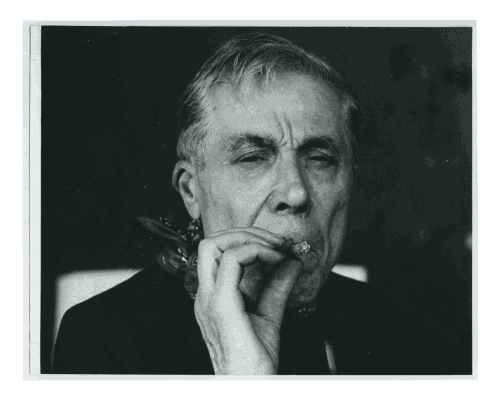Born as Eugène Paul in a house in Montmartre on the Rue Lepic painted by Van Gogh, Gen Paul began drawing and painting as a child. Since his father died when he was only ten years old, Gen Paul trained to work in decorative furnishings. Later on he served in the French army during World War I and was wounded twice, losing one of his legs.
During his convalescence, he returned to painting and at Le Bateau-Lavoir and became friends with Juan Gris who helped him a great deal. Although Gen Paul never received any formal training, he made a living from his art for almost sixty years. He soon developed a dynamic form of expressionism reflecting influences as varied as Toulouse-Lautrec, Van Gogh, Cézanne, Goya, Velázquez, and El Greco.
Between 1925 and 1929, he produced many of his best works. The paintings during this phase are characterized by motion created by gestural brush strokes, daring compositions, forced perspectives, diagonals, zigzags, juxtaposed areas of abstraction and realism, and flat areas of colour.
Unlike other expressionists of the time such as Soutine, Rouault, and the German expressionists, Gen Paul's works are full of optimism - fuelled by his passion for daily life and his desire to overcome his handicap. Due to the dynamism and motion inherent in his paintings, some consider Gen Paul to be the first action painter, a precursor to the abstract expressionists of the 1950s.
Gen Paul first exhibited at the Salon d'Automne and the Salon des Indépendants in Paris in 1920. In 1928, his works were exhibited with those of Pablo Picasso and Chaim Soutine. The paintings of 1930s reflect a more sober mood with precise lines and carefully chosen colours and an emphasis of rhythm over motion.
From the 1940s through his death, Gen Paul reverted to a style of action painting characterized by many of the elements of his work in the 1920s, but his later work never again succeeded in recapturing the innovation, emotion and expressionism of his earlier works. In 1934, he was recognized for his contributions to France and was awarded the Legion of Honour. Three years later he painted a large fresco for the Pavilion of Wines of France at the Paris International Exposition.
Gen Paul died at the Hospital of Pity-Salpêtrière in Paris on 30 April 1975 and rests in the Cimetière Saint-Vincent in Montmartre. A great many of his works remain in private hands but a number of his important pieces can be found at museums in France and in other parts of Europe.
Send me more information on Gen Paul
Join our mailing list
* denotes required fields
We will process the personal data you have supplied in accordance with our privacy policy (available on request). You can unsubscribe or change your preferences at any time by clicking the link in our emails.







